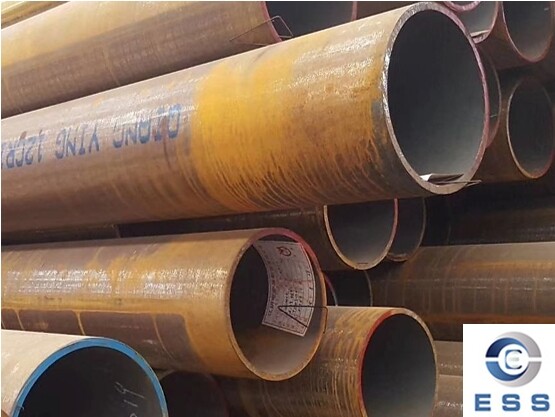
When choosing steel pipe, how to judge
whether seamless
pipe or welded
pipe should be used is a common problem. Understanding its applicable
scenarios is crucial to ensure the stability, durability and cost-effectiveness
of the pipeline. Generally speaking, when the nominal size is greater than 2
inches, seamless pipe is more suitable; when the nominal size is less than 2
inches, welded pipe is more economical and practical. This article will analyze
the applicable occasions of seamless pipe and welded pipe in detail and help
you make the best choice.
What is the nominal size
The nominal size refers to the standard
size of the steel pipe, usually in inches or millimeters. The nominal size is
not equal to the actual size, but a standard value.
The nominal size is used to distinguish
between the selection of seamless pipe and welded pipe because the nominal size
reflects the size of the pipe, which affects the pressure bearing capacity,
production process and cost of the pipe. Pipes with a nominal size greater than
2 inches usually need to withstand higher pressures and extreme environments,
and pipes with a nominal size less than 2 inches have lower pressures.
Understanding this is crucial to the correct selection of seamless pipes and
welded pipes.
Comparison of advantages and
disadvantages of seamless pipe and welded pipe
|
Features
|
Seamless pipe
|
Welded pipe
|
|
Advantages
|
Withstand higher pressure and more
extreme environmental conditions
|
Low production cost
|
|
No welded seams, reduce crack risk
|
Suitable for small-sized pipes, short
production cycle
|
|
Higher corrosion resistance and wear
resistance
|
Suitable for large-scale production and
daily pipeline applications
|
|
Disadvantages
|
Complex production process and high cost
|
Low pressure bearing capacity, easy to
have defects at welds
|
|
Not suitable for some low-pressure
applications
|
Poor adaptability to high temperature and
high pressure environment
|
When to choose seamless pipe
The production process of seamless pipe is
complex and the production cost is high, but it has excellent performance. The
nominal size of seamless pipe is generally greater than 2 inches. Seamless pipe
can withstand higher pressure than welded pipe, and will not crack at the
joint, which is particularly suitable for applications in high pressure and
harsh environments. Therefore, when using pipes with a nominal size greater
than 2 inches, seamless pipes should be preferred, such as oil and natural gas
transportation pipelines, OCTG pipe, etc.
When to choose welded pipe
Compared with seamless pipes, welded pipes
have a simple production process and low cost. The nominal size of welded pipes
is generally less than 2 inches. Compared with seamless pipes, welded pipes are
more prone to problems such as cracks at the weld, but their performance is
still very good when used in pipes with small nominal sizes. Because of its
simple production process and low cost, welded pipes should be preferred when
using pipes with a nominal size less than 2 inches. Common application scenarios
include household water supply pipes, heating, ventilation and air conditioning
(HVAC) systems, etc.
Summary
In summary, when choosing steel pipe
materials, the size of the nominal size needs to be considered. Seamless pipes
should be used when larger than 2 inches, because large-sized pipes require
stronger pressure-bearing capacity and higher quality; welded pipes should be
used when smaller than 2 inches, because the cost of small-sized pipes is more
important. In addition, when choosing, it is necessary to make comprehensive
considerations based on the specific situation and choose the most suitable
steel pipe material.













 Eastern Steel Manufacturing Co.,Ltd not only improve product production and sales services, but also provide additional value-added services. As long as you need, we can complete your specific needs together.
Eastern Steel Manufacturing Co.,Ltd not only improve product production and sales services, but also provide additional value-added services. As long as you need, we can complete your specific needs together.










